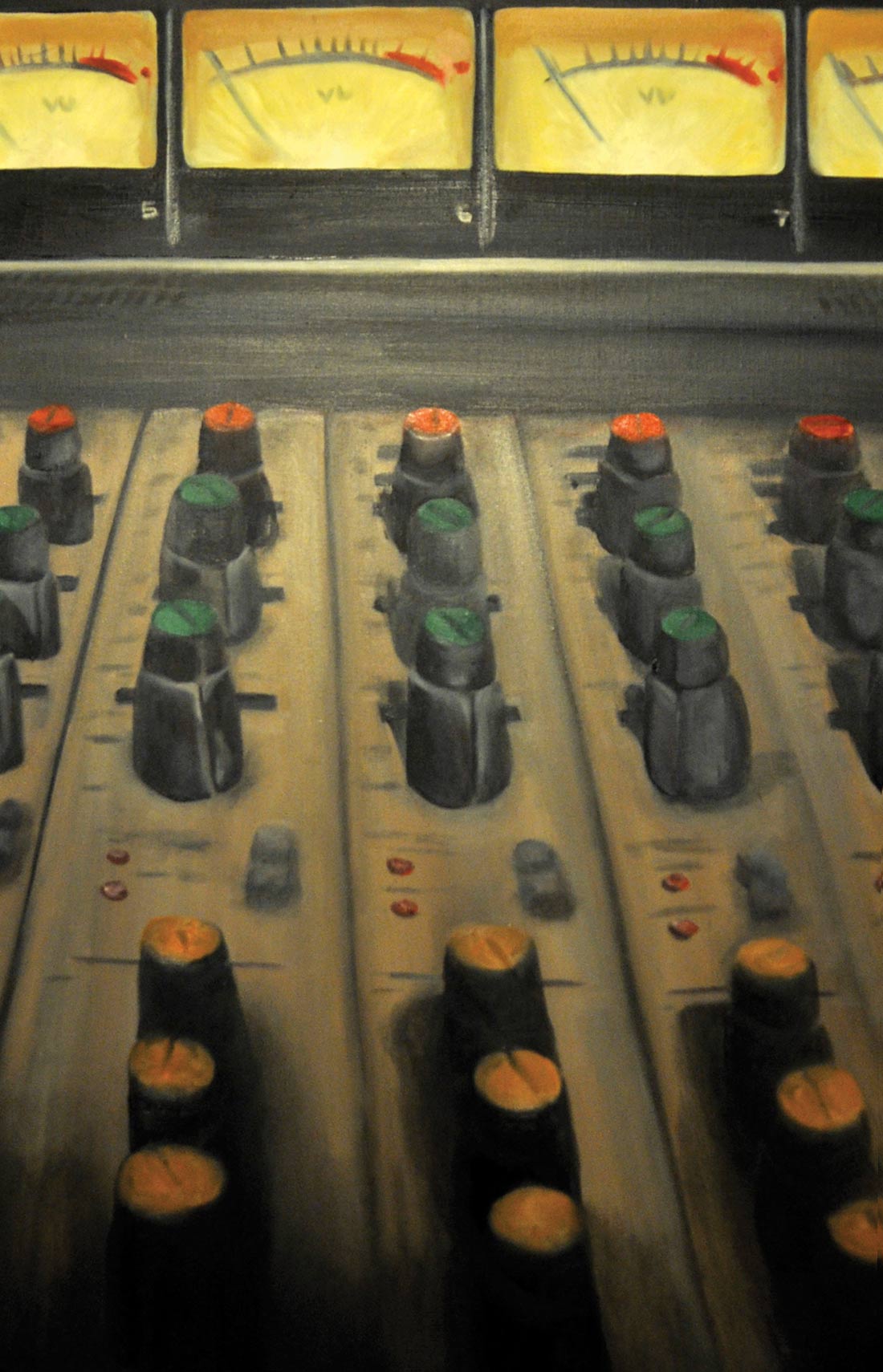At face value, Audio-Technica's new AT5040 large-diaphragm condenser looks like a standard, cylindrical, side-address mic, although the grille-to-body ratio suggests it may be a ribbon mic, since the basket is taller than what you see on your standard LDC. If you look closely through the tight, double- layered, metal weave, you can steal a glimpse at what is the most unique design I've seen in mic construction in a long time - perhaps ever. There are four rectangular, brass-rimmed capsules fastened together to form one mega-rectangle, with reportedly twice as much surface area as a 1'' circular diaphragm. The theory behind this is that you can get all of the benefits of a super-large diaphragm - low self-noise, extended frequency response, etc. - without the undesirable resonances or decreased transient response that would exist if it were all one big capsule.
The mic arrived just as I started to track a new record for the singer Mirah. We had both recently moved to Brooklyn and wanted to record the album primarily in non-studio spaces, like living rooms and friends' lofts. Having moved with only a handful of mics, I was excited at the prospect of having a high-quality LDC around for, among other things, her vocals. Over the course of making the record, the AT5040 saw use on lead and backing vocals, drums, percussion, electric and acoustic guitars, upright bass, violin, banjo, and vibraphone. Sometimes this was in conjunction with a ribbon, dynamic, or small-capsule condenser, but after a day or two, I certainly had enough confidence in the AT5040 for it to be the only mic up on many of these sources.
In this process, the two characteristics I kept attributing to the mic were "open" and "natural." This is not a mic that hypes the highs in order to win a quick A/B comparison. In fact, when A/B/C'ed on another vocalist (back at my Oakland studio) against a Mojave Audio MA-200 [Tape Op #55] and a Blue Bottle with the B6 capsule [#49], she said that the AT5040 made her feel "naked" in the cans, whereas the other mics, through the same preamp with no extra processing, sounded more "finished." I took this to mean that the AT5040, in addition to having a gentler high end, allowed more of her dynamic range to be intact than the two tube mics. This extra depth-of-field, so to speak, may be desirable in many applications, but it was not what this particular singer wanted to hear on herself while performing.
As I said above, one of the words that kept popping into my mind was "open," and this partly pertains to what I perceived as a wider polar pattern than other cardioid mics I was using. When set next to a Neumann U 87 Ai in cardioid, the AT5040 picked up a significant amount more of the sound of the room. Also, when placed around the twelfth fret of an acoustic guitar, I could hear much more of the sound hole and body than I could through a Blue Dragonfly Deluxe [Tape Op #22], which seemed quite a bit more focused by comparison. The AT5040 certainly does not have an omni pattern, but I'd deem it to be more on the subcardioid side of the spectrum.
Back to Mirah for a second - for her voice, the AT5040 was an absolute dream. Whether through an Aurora Audio GTQ2 [Tape Op #38], an Electrodyne 501, or the onboard preamp on the Universal Audio Apollo [see below], the AT5040 just performed beautifully in capturing everything I love about her voice. The slight bit of husky/whispery nature to her singing was really brought out, and the sibilance was kept very much in check. Also, the extra bit of room sound around her was really nice for this project, since it fit in with the casualness we were going for.
A few words must be said about the AT8480 shockmount that comes with the microphone, since it is an impressive bit of industrial design. It employs hinges, magnets, and a tiny thumb-lock to secure the mic barrel in its grasp, providing absolute confidence in the support of the AT5040's (not insubstantial) weight. The design does include a single, long elastic band, which will inevitably need replacing at some point (as they all do), and I did have to tighten the screws holding the whole mechanism together once. Overall, though, I find the AT8480 to be among the best shockmounts I have used.
At three grand, this is not a cheap microphone. There are many choices out there for great mics at lower price points, some of which are in Audio-Technica's own 40 Series. For that reason, this is not a likely candidate for the first mic in your closet. But if you are having trouble getting the sounds you want out of the mics you have, or if you're looking for a great alternative to the standard-fare in its price range, you should definitely hear what the AT5040 can do. Plus, it comes with an excellent shockmount and a very sturdy (yet lightweight) flight case, neither of which should be taken for granted when choosing which mic to drop your dough on.




_disp_horizontal_bw.jpg)